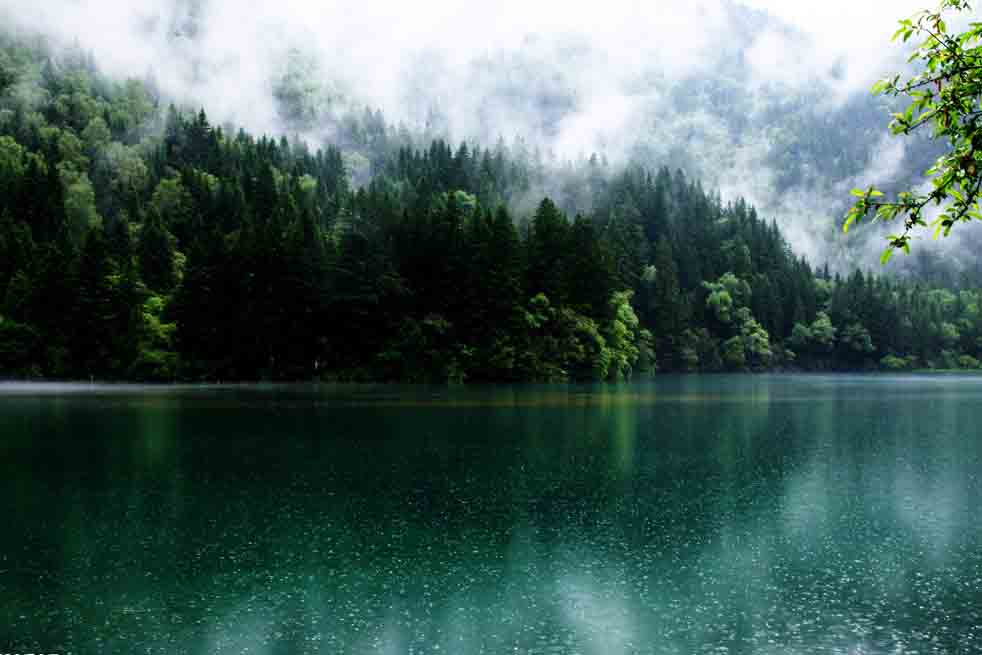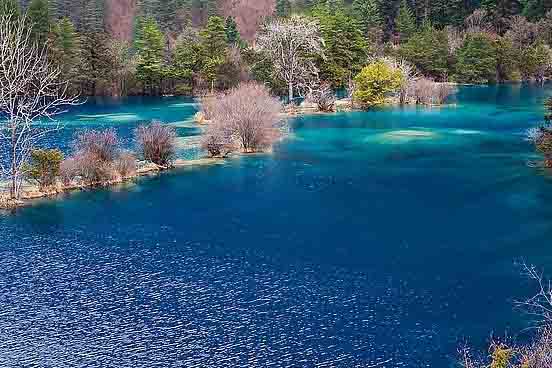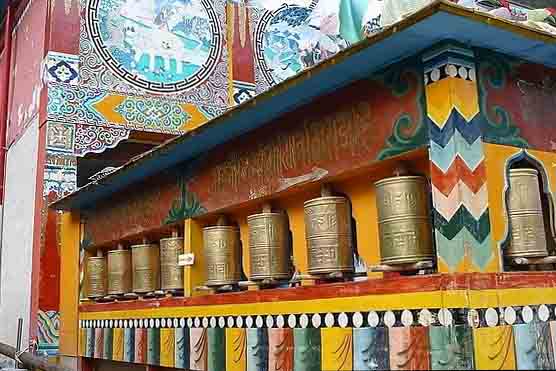Home > Attractions >
Jiuzhai Valley
As one of the splendid travel destinations along the silk road, it is the best place where you can enjoy the magnificent natural landscape.
Introduction of Jiuzhai Valley:
Jiuzhai Valley is one of the most outstanding and attractive scenic spots in southwest China’s Sichuan province. The World Heritage-listed spot is situated about 400 kilometres north of the province’s capital city, Chengdu, and is over 80 kilometres long, covering an area of 60,000 hectares. “Jiuzhaigou” means “Nine Village Valley” and refers to the nine villages of Tibetan people here.
The scenic spot was discovered by some woodcutters in the 1970s and was so admired over the next few years that it was consequently listed as one of the most important scenic spots in China in 1982. By 1992 Jiuzhaigou had become one of China’s 33 World Heritage sites, including E’Mei Mountain and Huangshan Mountain.
What to visit in Jiuzhai Valley?
There are six scenic spots in the Jiuzhaigou area: Changhai, Jianyan, Nuorilang, Shuzheng, Zharu, and Heihai. Its double waterfalls, snowy peaks, colorful forests, and green seas have made Jiuzhaigou known throughout the world. The area also has the added charm of Tibetan culture.
Jiuzhaigou is famed for its network of alpine lakes, spectacular waterfalls, and splendid vegetation. There are, for example, more than 100 lakes of different sizes that are scattered in the midst of great mountains, where the valley echoes with the roar of cataracts and cliffside springs. These lakes of brilliant colors are called “haizi” or “sea” by the local Tibetan people. It is these alpine lakes that make Jiuzhaigou such a fantastic place. Jiuzhaigou, therefore, has always enjoyed the reputation of being a “wonderland on earth”. It abounds in virgin forests, rare flowers, and grasses. What’s more, in the vast primeval forests, all kinds of rare birds and animals are found. Over 140 bird species, including a number of rare species, also inhabit the valley, as well as a number of endangered plant and animal species, including the panda.
Wolong Lake:
A milky white travertine dyke lies in the midst of the lake and looks like a huge dragon lying across the bottom of the lake. This phenomenon gives the lake its name of Wolong Lake, which means Lying Dragon Lake.
Mirror Lake:
The clear water reflects the valley when the air is still of a morning, just like the treasured mirror of a goddess of local legend.
Multi-Colour Lake :
As the name implies, this lake is an intriguing mix of different shapes and colors. The Multi-Colour Lake lies at an altitude of over 3,000 metres and has an atmosphere of peace and mystery.
Nuorilang Falls and Panda:
The different shapes and colors of the lakes in Jiuzhaigou provide a perfect geographical environment for the forming of waterfalls. There are 17 waterfalls at Jiuzhaigou, amongst which Pear Falls, Nuorilang Falls, and Panda Falls are the most famous. Pear Falls and Nuorilang Falls are both 300 meters wide, while Panda Falls is 50 meters wide. Jiuzhaigou has more beautiful waterfalls than any other scenic area.
The lake and forests of Jiuzhai Valley:
Each lake at Jiuzhaigou possesses a unique beauty, as unlike the other lakes at Jiuzhaigou as it is unlike the lakes anywhere else on Earth. Each lake, as clear as crystal, shines with its own unique color.
The forest at Jiuzhaigou is also spectacular, and the leaves, in particular, seem especially unique. The most beautiful season is autumn when the whole valley turns golden. The reflection of the forest in the lakes is so spectacular that it makes people believe that they are in a fairy-tale world.
When is the best time to visit?
Every April to October is the best time to travel to Jiuzhai Valley, among them, the spring in Jiuzhai Valley is quite charming, the midsummer is gorgeous, the late autumn is bright, and the midwinter is magical. Meanwhile, the scenery in the late autumn of Jiuzhaigou is quite gorgeous. When you entering the scenic area, you will see the stupendous scenery and many colourful leaves, and that will definitely feast your eyes.
Travel tips:
1. The scenic spot belongs to the plateau climate, and the temperature difference between day and night, so travelers are suggested to carry some warm clothes plus sunscreen products
2. It is quite important to be prepared when up in the mountainous areas, be sure to bring plenty of food and drinks.
3. The altitude of the scenic spot is high, and some tourists may have an altitude reaction. There are many oxygen sites in the scenic area, and it provides the free oxygen inhalation, but the oxygen tools need to be purchased.
The admission fees:
Peak season: 110 RMB/Person
Off season: 40 RMB/Person
The sightseeing bus ticket: 90 RMB/Person
Opening time:
8.00 AM to 4.00 PM
Related Articles & Posts
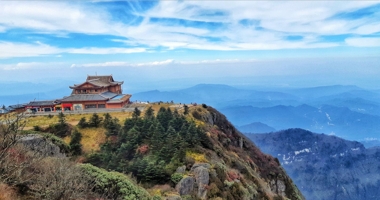 E'mei Mountain
E'mei Mountain 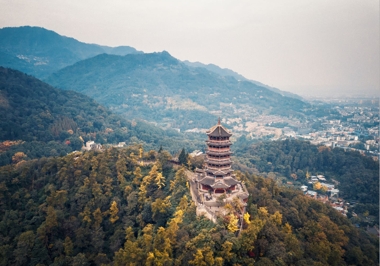 Dujiangyan Scenic Area
Dujiangyan Scenic Area
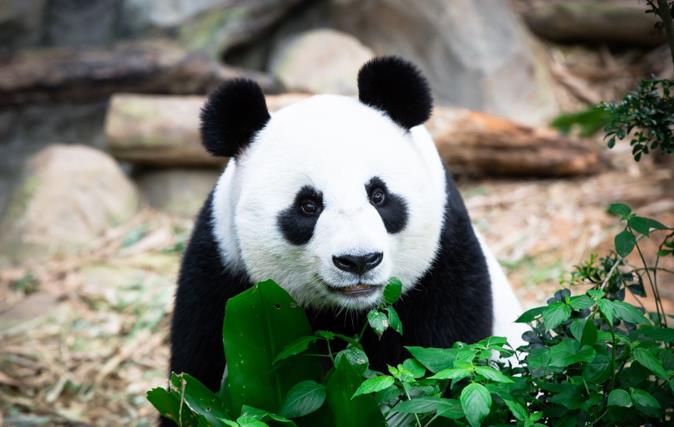 Giant Panda Breeding Research Base
Giant Panda Breeding Research Base 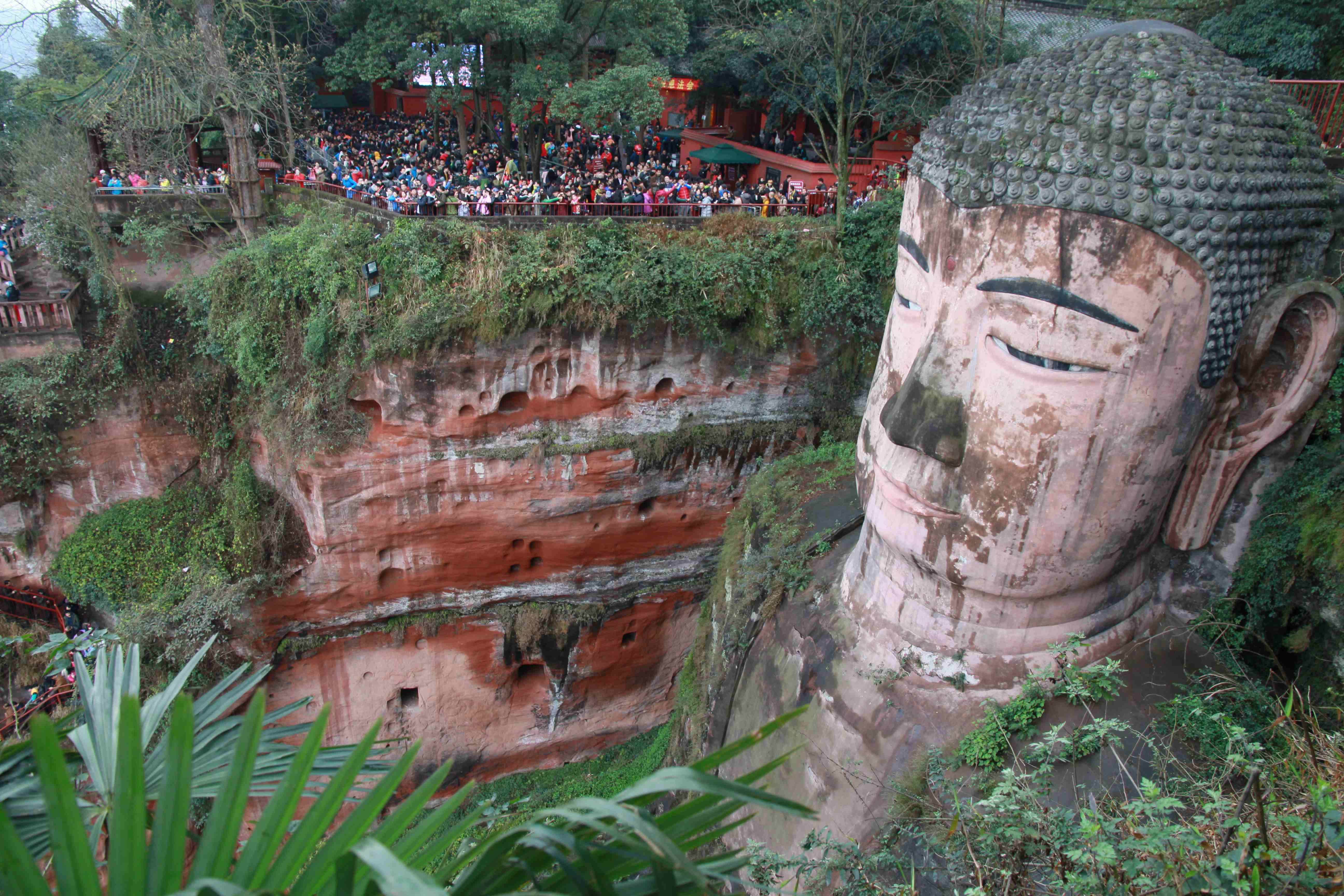 Leshan Buddha Sculpture
Leshan Buddha Sculpture
Recommended Silk Road Tours
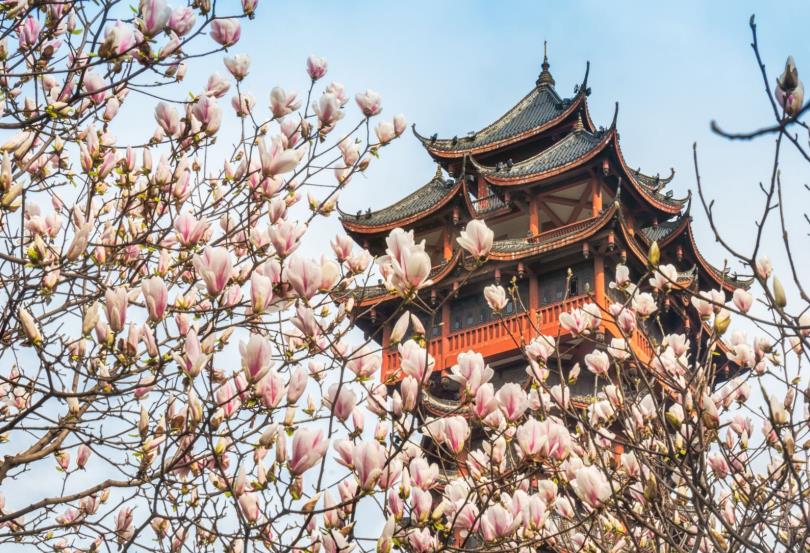 Chengdu-Leshan Two Days Tour
Chengdu-Leshan Two Days Tour 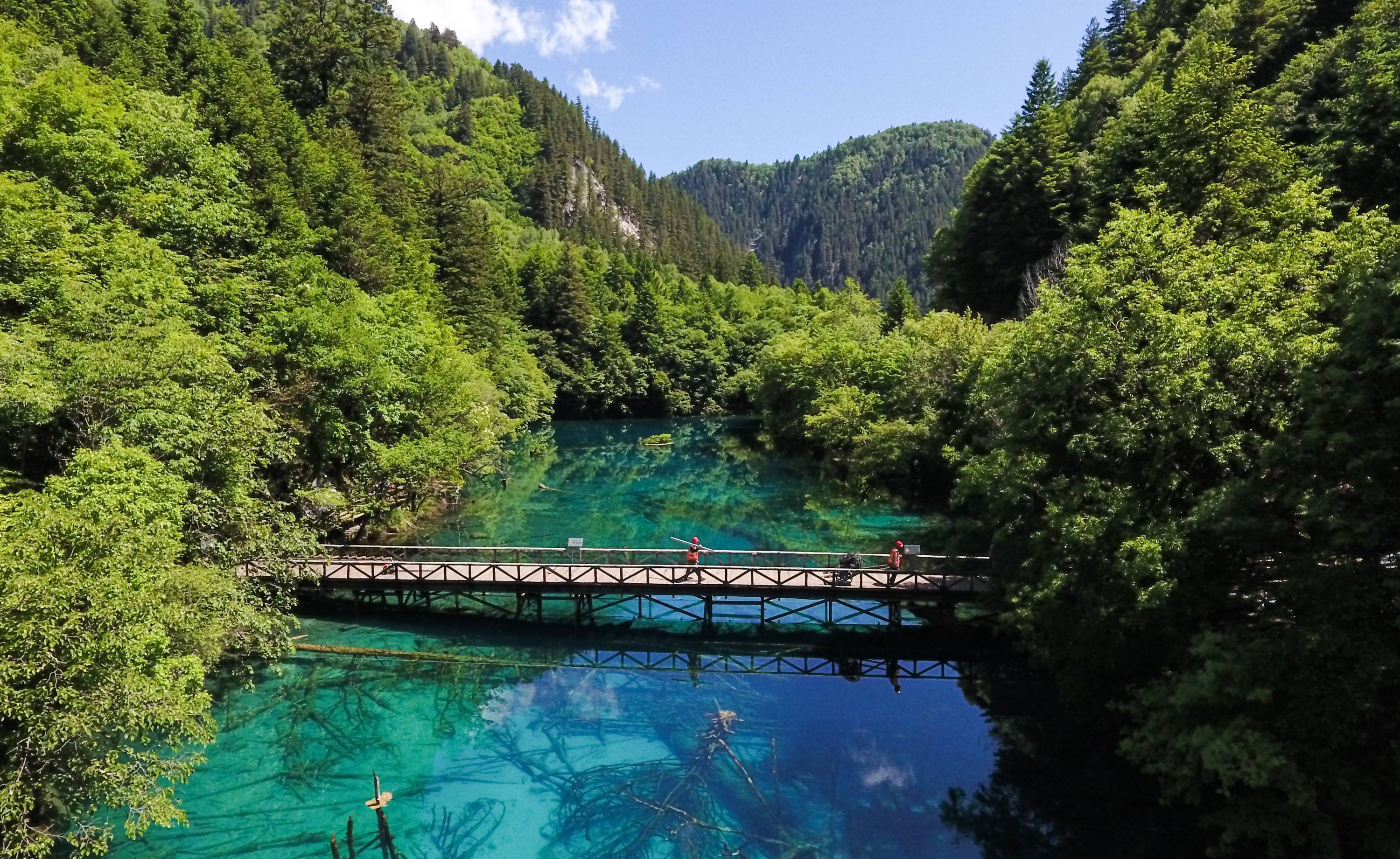 9 Days Chengdu Jiuzhaigou Tour
9 Days Chengdu Jiuzhaigou Tour
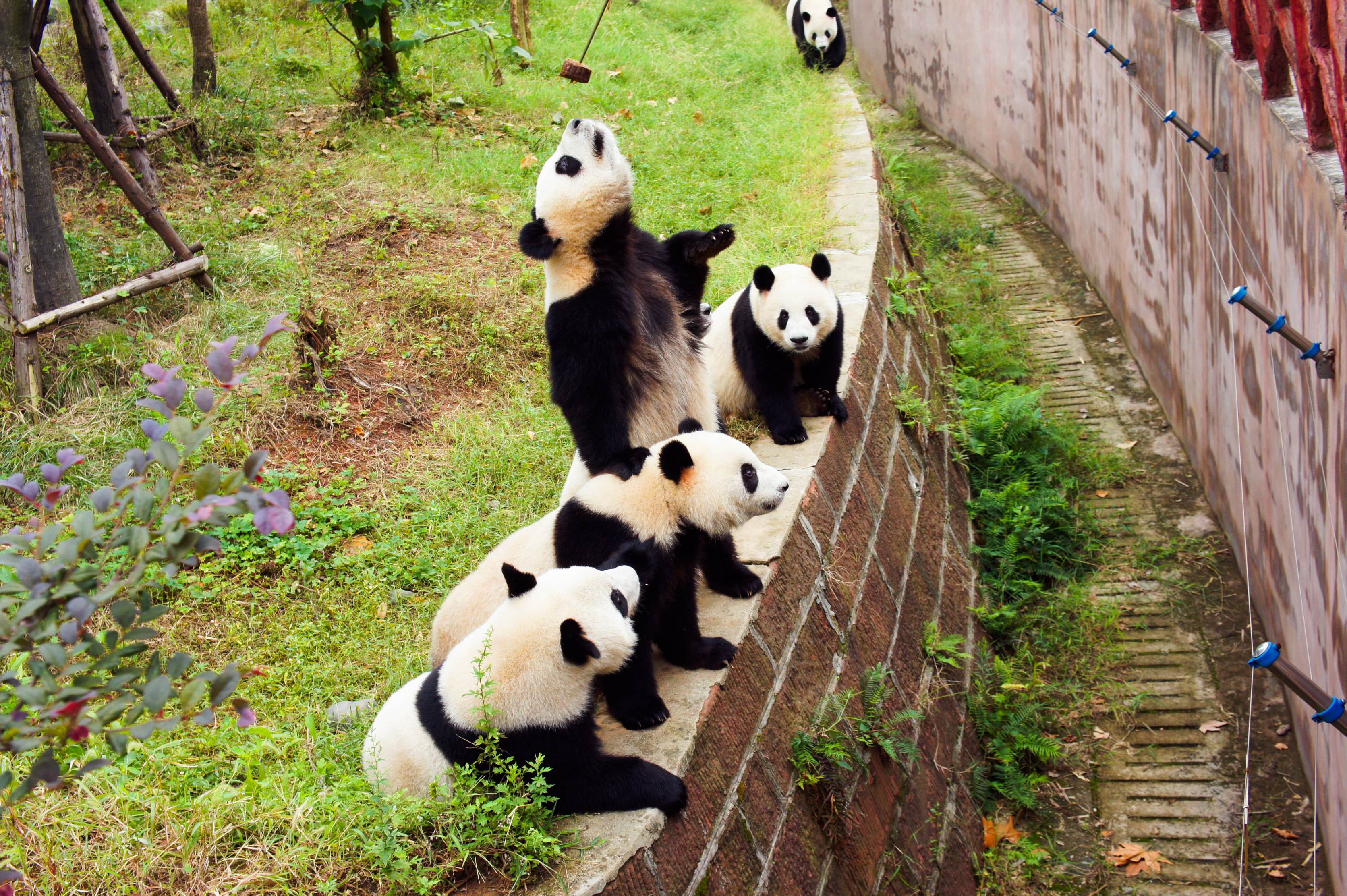 10 Days Great Wall and Pandas Tour
10 Days Great Wall and Pandas Tour 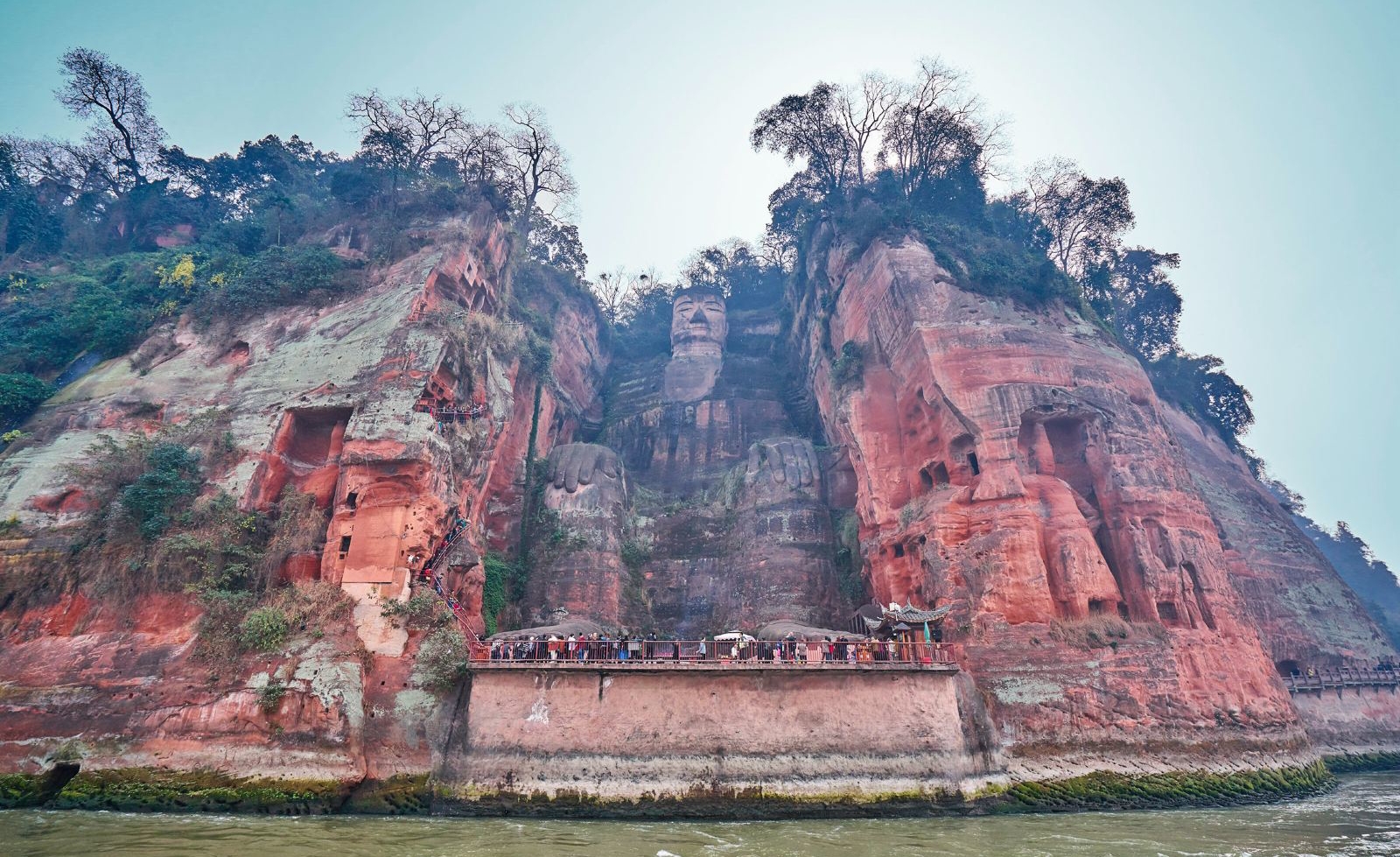 China Wonders Adventure Tour
China Wonders Adventure Tour
Introduction of Jiuzhai Valley:
Jiuzhai Valley is one of the most outstanding and attractive scenic spots in southwest China’s Sichuan province. The World Heritage-listed spot is situated about 400 kilometres north of the province’s capital city, Chengdu, and is over 80 kilometres long, covering an area of 60,000 hectares. “Jiuzhaigou” means “Nine Village Valley” and refers to the nine villages of Tibetan people here.
The scenic spot was discovered by some woodcutters in the 1970s and was so admired over the next few years that it was consequently listed as one of the most important scenic spots in China in 1982. By 1992 Jiuzhaigou had become one of China’s 33 World Heritage sites, including E’Mei Mountain and Huangshan Mountain.
What to visit in Jiuzhai Valley?
There are six scenic spots in the Jiuzhaigou area: Changhai, Jianyan, Nuorilang, Shuzheng, Zharu, and Heihai. Its double waterfalls, snowy peaks, colorful forests, and green seas have made Jiuzhaigou known throughout the world. The area also has the added charm of Tibetan culture.
Jiuzhaigou is famed for its network of alpine lakes, spectacular waterfalls, and splendid vegetation. There are, for example, more than 100 lakes of different sizes that are scattered in the midst of great mountains, where the valley echoes with the roar of cataracts and cliffside springs. These lakes of brilliant colors are called “haizi” or “sea” by the local Tibetan people. It is these alpine lakes that make Jiuzhaigou such a fantastic place. Jiuzhaigou, therefore, has always enjoyed the reputation of being a “wonderland on earth”. It abounds in virgin forests, rare flowers, and grasses. What’s more, in the vast primeval forests, all kinds of rare birds and animals are found. Over 140 bird species, including a number of rare species, also inhabit the valley, as well as a number of endangered plant and animal species, including the panda.
Wolong Lake:
A milky white travertine dyke lies in the midst of the lake and looks like a huge dragon lying across the bottom of the lake. This phenomenon gives the lake its name of Wolong Lake, which means Lying Dragon Lake.
Mirror Lake:
The clear water reflects the valley when the air is still of a morning, just like the treasured mirror of a goddess of local legend.
Multi-Colour Lake :
As the name implies, this lake is an intriguing mix of different shapes and colors. The Multi-Colour Lake lies at an altitude of over 3,000 metres and has an atmosphere of peace and mystery.
Nuorilang Falls and Panda:
The different shapes and colors of the lakes in Jiuzhaigou provide a perfect geographical environment for the forming of waterfalls. There are 17 waterfalls at Jiuzhaigou, amongst which Pear Falls, Nuorilang Falls, and Panda Falls are the most famous. Pear Falls and Nuorilang Falls are both 300 meters wide, while Panda Falls is 50 meters wide. Jiuzhaigou has more beautiful waterfalls than any other scenic area.
The lake and forests of Jiuzhai Valley:
Each lake at Jiuzhaigou possesses a unique beauty, as unlike the other lakes at Jiuzhaigou as it is unlike the lakes anywhere else on Earth. Each lake, as clear as crystal, shines with its own unique color.
The forest at Jiuzhaigou is also spectacular, and the leaves, in particular, seem especially unique. The most beautiful season is autumn when the whole valley turns golden. The reflection of the forest in the lakes is so spectacular that it makes people believe that they are in a fairy-tale world.
When is the best time to visit?
Every April to October is the best time to travel to Jiuzhai Valley, among them, the spring in Jiuzhai Valley is quite charming, the midsummer is gorgeous, the late autumn is bright, and the midwinter is magical. Meanwhile, the scenery in the late autumn of Jiuzhaigou is quite gorgeous. When you entering the scenic area, you will see the stupendous scenery and many colourful leaves, and that will definitely feast your eyes.
Travel tips:
1. The scenic spot belongs to the plateau climate, and the temperature difference between day and night, so travelers are suggested to carry some warm clothes plus sunscreen products
2. It is quite important to be prepared when up in the mountainous areas, be sure to bring plenty of food and drinks.
3. The altitude of the scenic spot is high, and some tourists may have an altitude reaction. There are many oxygen sites in the scenic area, and it provides the free oxygen inhalation, but the oxygen tools need to be purchased.
The admission fees:
Peak season: 110 RMB/Person
Off season: 40 RMB/Person
The sightseeing bus ticket: 90 RMB/Person
Opening time:
8.00 AM to 4.00 PM
Related Articles & Posts
 E'mei Mountain
E'mei Mountain  Dujiangyan Scenic Area
Dujiangyan Scenic Area  Giant Panda Breeding Research Base
Giant Panda Breeding Research Base  Leshan Buddha Sculpture
Leshan Buddha Sculpture Recommended Silk Road Tours
 Chengdu-Leshan Two Days Tour
Chengdu-Leshan Two Days Tour  9 Days Chengdu Jiuzhaigou Tour
9 Days Chengdu Jiuzhaigou Tour  10 Days Great Wall and Pandas Tour
10 Days Great Wall and Pandas Tour  China Wonders Adventure Tour
China Wonders Adventure Tour 
